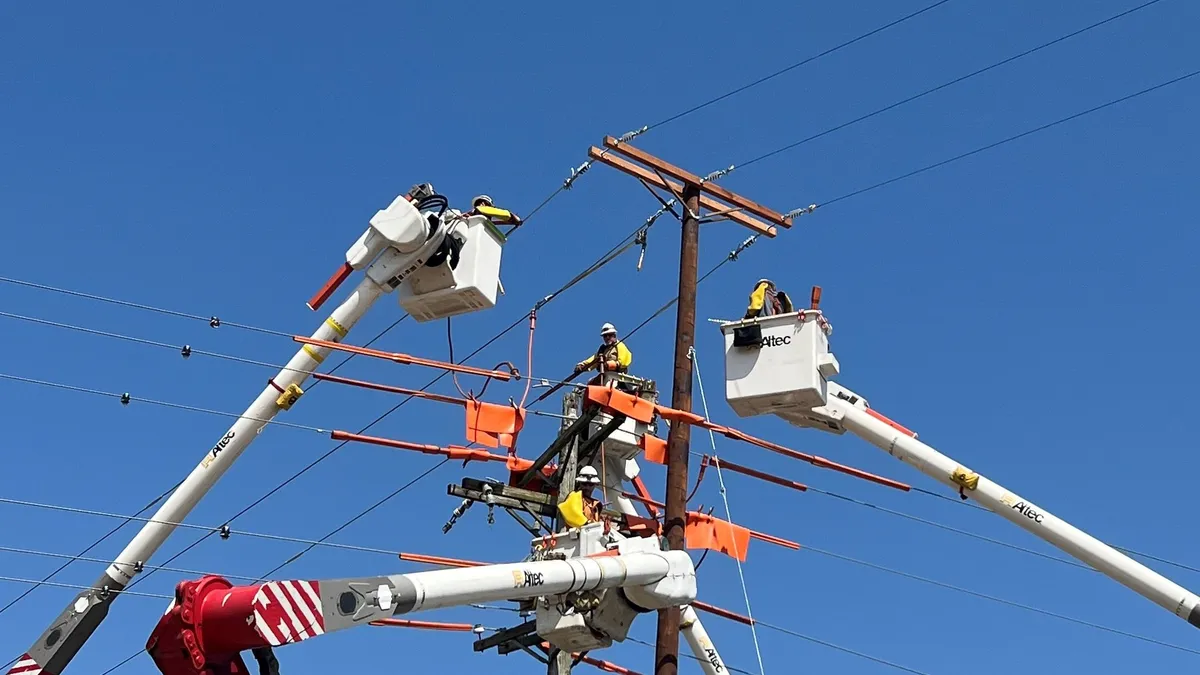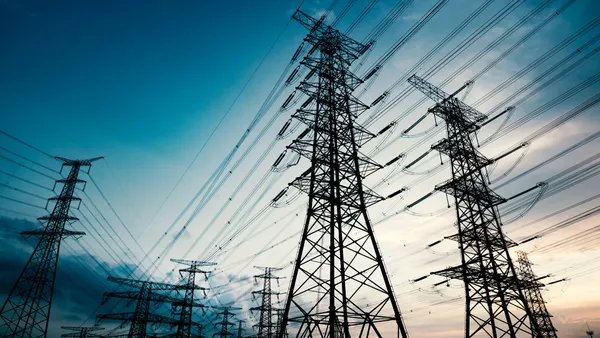Dive Brief:
-
FirstEnergy plans to spend $26 billion on its regulated utility system over the next five years, a 44% jump from its last five-year investment plan, company officials said Friday during a quarterly earnings call with analysts.
-
About 75% of the planned spending will be on investments that can be recovered through state and federal formula rates, which are recouped outside of rate cases, according to the company. FirstEnergy expects its ratebase will grow by 9% a year over the next five years — up from about 6% a year — with single digit rate hikes for its customers over that period.
-
“The significant improvement in our balance sheet puts FirstEnergy in a growth and investment mode,” Brian Tierney, FirstEnergy president and CEO, said. “The fact that we do not expect incremental equity to fund our capex growth beyond our employee benefit programs differentiates FirstEnergy from many of our peers.”
Dive Insight:
Last year was a game-changing year for FirstEnergy in terms of strengthening its balance sheet, according to Tierney, who pointed to the company’s decision to sell 30% of FirstEnergy Transmission to Brookfield Super-Core Infrastructure Partners for $3.5 billion. The deal is expected to close at the end of March, he said.
“We are here for the first time, ready, willing and able to put the money into our regulated properties for the benefit of our customers, and it is a significant difference from what you've seen in the past,” Tierney said.
About 45% of FirstEnergy’s capital expenditure plan targets Federal Energy Regulatory Commission-regulated transmission projects, including ones to support New Jersey offshore wind, and new data centers, Jon Taylor, FirstEnergy senior vice president and chief financial officer.
FirstEnergy, based in Akron, Ohio, plans to improve its distribution system with reliability enhancements, grid modernization and clean energy investments such as smart meters, distribution automation and energy efficiency programs, Taylor said.
FirstEnergy expects additional projects, such as transmission, will emerge that can be added to its capital expenditure program without the need for selling equity, officials said.
FirstEnergy beat earnings expectations for 2023, appears on track for 6% to 8% annual earnings per share “linear” growth, is planning higher capex without issuing equity, has a solid balance sheet and a management team that is “actually executing,” plus its stock has discounted valuation levels, Shahriar Pourreza, a Guggenheim Partners analyst, said in a client note Friday. “What else can you ask for?”
Meanwhile, FirstEnergy has dropped its plan to cut its carbon dioxide emissions by 30% below 2019 levels by 2030. The goal hinged on cutting emissions from FirstEnergy’s 1,098-MW Fort Martin and 1,984-MW Harrison coal-fired power plants in West Virginia, according to Tierney.
“We've identified several challenges to our ability to meet that interim goal, including resource adequacy concerns in the PJM region and state energy policy initiatives,” he said.
In filings with West Virginia utility regulators, FirstEnergy said the useful life of Fort Martin is expected to end in 2035 and of Harrison in 2040. The power plants produced 15.6 million MWh last year, according to the company. FirstEnergy still intends to be net carbon neutral by 2050, Tierney said.
FirstEnergy anticipates its weather-normalized electricity sales will grow by about 1% a year, but that they could increase even more through data center growth and vehicle electrification in its six-state service territory.
FirstEnergy’s fourth-quarter income from continuing operations swung to a $175 million gain, up from a $403 million loss a year ago. Revenue was flat at $3.2 billion. Earnings from continuing operations in 2023 jumped to $1.1 billion from $406 million in 2022 as revenue increased in 2023 to $12.9 billion from $12.5 billion the year before.
FirstEnergy electricity sales fell 1.4% in the fourth quarter to 34.9 million MWh compared to the year-ago quarter But weather-adjusted sales, a measure that aims to eliminate the variability of weather, increased 1.1%, driven by higher industrial sales, FirstEnergy said.















